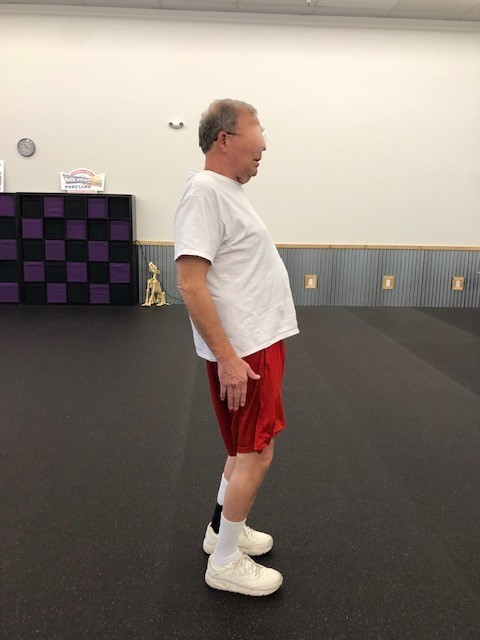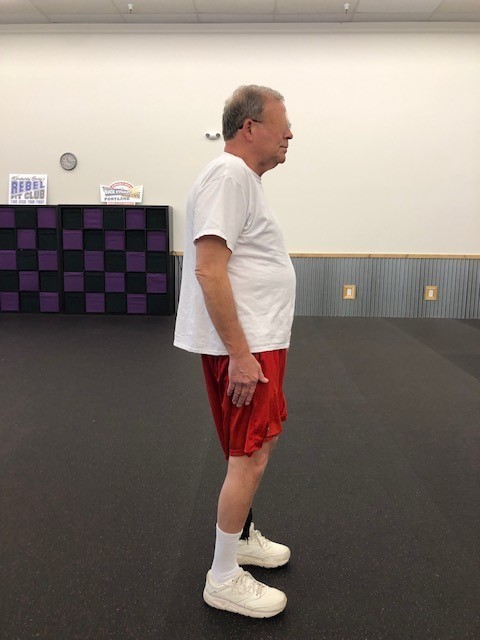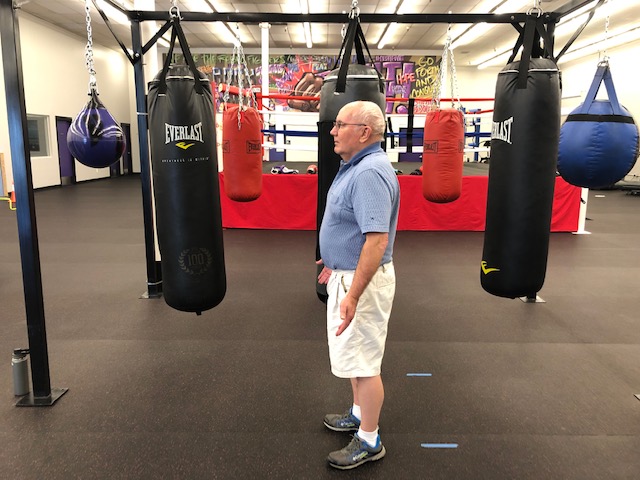
Have you been told to pull your shoulders back to correct your posture? Many of my clients with Parkinson’s disease are told, “To correct your posture, stand straight and pull your shoulders back,” or “Stand at attention like a soldier.”
Being mindful of your posture and standing straight are important, but you could be creating other orthopedic problems by doing this.
The image shown below is one of my clients demonstrating how he was told to stand straight by pulling his shoulders back. As you can see, he’s leaning way back and compressing his low back. While he was doing this, I asked him if he was comfortable. He said, “It’s hard to maintain.” Then I asked him to walk forward in that posture and he couldn’t!

While doing this he didn’t sense his body was leaning backward. Often Parkinson’s skews your proprioception (awareness of your body in space). He had been pulling back his shoulders several times a day thinking he was standing straight. When I showed him this photo, he was surprised at how far back he was leaning and how far forward his head was.
Here is a better way to think about your posture:
Posture is dynamic and fluid, it’s not stiff or rigid. If you pinch your shoulders back, you shoot your head and hips forward, putting undue pressure on your low back.
Throwing your arms backward while quickly and forcefully extending the spine can result in a hyper extended low-back and painful shoulder joints. I’ve even seen this in Parkinson’s classes.
Instead, Try These 6 Steps To Better, Safer Posture:

- Begin Standing. Stand with your legs directly under your hips with your feet and knees pointing forward (straight, not bent).
- Balance Your Weight. Rock slightly forward and back on your feet, making the movement smaller and smaller until you feel your weight is balanced over the center of your foot.
- Activate Your Core Muscles. Lightly pull your abdominal muscles in and up. Notice a feeling of aliveness. You can do this step even in a wheelchair (if you are unable to stand).
- Relax and Open Your Chest. The chest should not be caved in or puffed out. Just rest easily.
- Shoulders Relaxed and Thumbs Turned. Shoulders should ease-fully drop away from your ears. Turn your thumbs out to open the chest, then return palms to face your body (not facing backward).
- Ears Reach for the Sky. Imagine your head and neck floating above your shoulders toward the sky. Your gaze should be straight ahead, with your throat open and chin resting naturally.

Practice this technique several times a day and soon you will be able to get into the position quickly (but never forcefully).
Enjoy your new posture!
– 